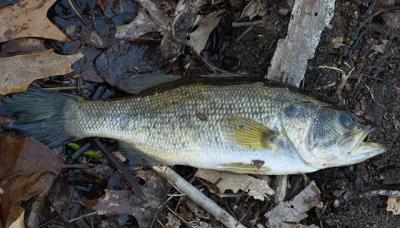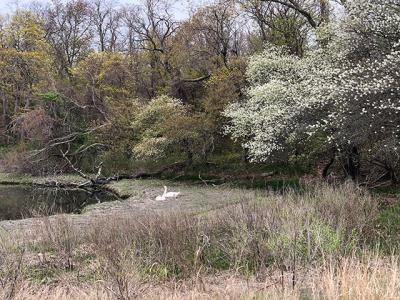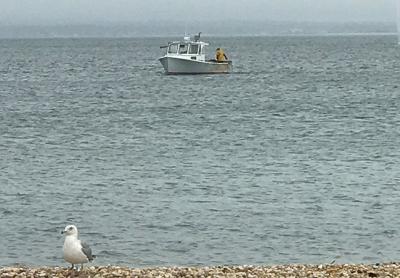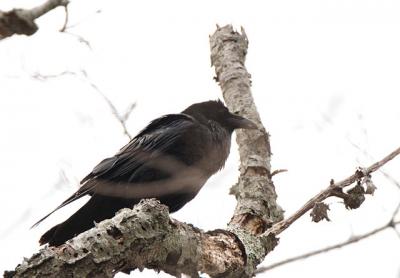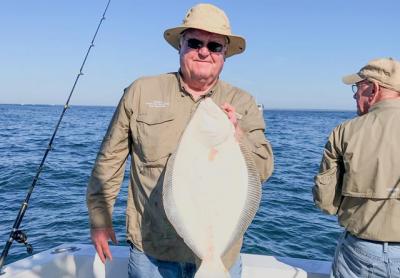Lobster and Seals, Oh My!
Lobster and Seals, Oh My!
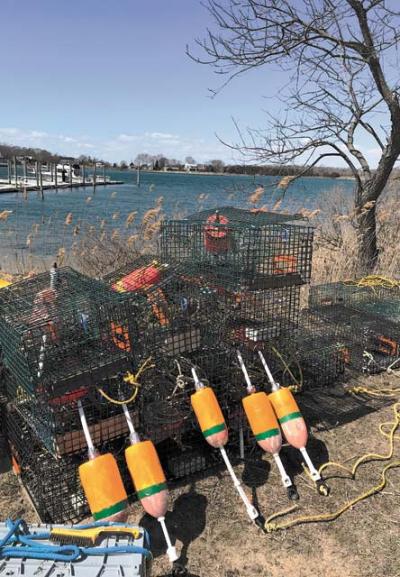
It was time.
Early Saturday morning, after sitting silently at my dock for almost three weeks due to the incessant cold and windy weather, my boat was finally freed from the dock lines for the first time this season. Mind you, while the sun was strong and clear over the now-bright eastern horizon, the temperature was still a very chilly 35 degrees dockside and there was a noticeable breeze whistling from the northwest. It felt well below freezing. Spring was not here, even if the calendar said so.
But I was restless and frustrated by the lack of any good weather windows. I needed to give my 30-foot Nova Scotia-built fishing boat a chance to stretch her sea legs, as they say. The boat itself is a tank. It was constructed in the very small seaside town of Arichat on Isle Madame, a very tiny island located to the east of Cape Breton Island, where French Acadian is still spoken by many of the locals. It was built over 15 years ago and has proven to be a very reliable, stout craft that can take on just about any kind of sea. On Saturday, it needed to be run, no matter the conditions.
However, there was another reason to get away from the dock, and that was to finally set my lobster gear out for the season. Due to a variety of time-laden work commitments, long hours, intense deadlines, and some extensive travel in the U.S. and abroad in my previous professional career, I had not set my well-worn traps for nearly nine years. It was far too long, but I just did not have the time.
While they had been collecting weeds and various vines, and two even had a modest-size locust tree growing through them, the 36-inch traps were still in pretty good shape when I unearthed them from the far distant corner of my marina a few weeks ago. They could still fish, plus I had bought a few used ones last fall in case my original traps failed.
That said, they did require a bit of repair, including re-twining some of the parlor heads, replacing a good number of elastic latches that hold the entrance of the lobster traps together, scraping and painting buoys, repairing a few bottom runners, and replacing the trawl lines on more than half of them.
I spent a few days bundled up in the chilly wind over the past few weeks getting the gear up to snuff, but it felt good to do that again after so many years. I realized I had missed it very much. It was therapeutic in so many ways, despite my newly chafed and sore hands.
However, there was one final snag: I had no bait for my traps. Due to the extended, unseasonably cold weather, there has been a late start of the fishing season, which resulted in an acute scarcity of various kinds of bait and fish (bunker is the primary choice of those few who still trap for lobster), as many commercial box trap fishermen have not had a chance to set their poles and nets in the bays due to the lousy weather.
Over the past week or so, I made a few calls to some fishing contacts and bait stores and all had the same monotone response: no bait. A final call to Ken Morse at Tight Lines Tackle in Sag Harbor was my last hope.
“I’ve been trying to get bait, but it’s been very difficult to get the dealers UpIsland to make a visit to the East End,” he said in frustration. A day later, Morse called me with good news. He was to receive a shipment of bunker the next day and asked how much I needed.
It took about an hour to reach the lobster grounds, where we were greeted by several harbor seals playfully rolling around in the 42-degree water. While seals are incredibly cute, cuddly, and have warm endearing eyes that just about everyone falls in love with, I recalled from earlier seasons that they have absolutely no issue eating through the tough twine that surrounds the funnels to the traps where the bait (and hopefully some lobsters) are encased. Seals are not stupid; they love an easy meal and lobster is a favorite item on their menus. That said, the traps were dropped overboard and I hope in a week when I check on them, we may be fortunate enough to enjoy a fresh lobster dinner.
On the fishing scene, action in many areas remains slow and angler participation minimal. The season for porgies starts on Tuesday and fluke fishing commences three days later. While striped bass season opened on April 15, action for the popular fish has been scattered at best. Those who love their fried calamari are waiting for the spring run of squid, which should begin in the next two weeks.
“Things are fairly quiet on both forks,” said Scott Jeffrey, owner of East End Bait and Tackle in Hampton Bays. “A few bunker pods have been passing through the Shinnecock Canal for the past few weeks. A couple of flounder were taken in the canal and some schoolie stripers are in the back creeks of the Peconics. That’s been about it.”
Out at Montauk, the saltwater scene has been extremely quiet, as many boat owners are still getting their respective boats out from their winter of deep hibernation wrapped under heavy plastic coverings.
At the Tackle Shop in Amagansett, the owner, Harvey Bennett, was more enthused. He had good news from both salt and freshwater. “I got a report that some schoolie bass showed up at Cartwright Shoals at the south end of Gardiner’s Island on Saturday,” he said. “I also heard rumors of porgies in Fort Pond Bay and a few rat stripers at Montauk Point.” Bennett was more excited over the freshwater action going on in various local ponds.
“Freshwater fishing has been hot in Montauk and other ponds,” he said, pointing to largemouth bass and big carp, and perch at Hook Pond in East Hampton, and pickerel at Scoy Pond in Northwest Woods.
And if you have a desire to see one of those lobster-loving seals, the Viking Fleet has scheduled several seal-watching trips. The next one is Saturday, when the Viking Superstar will depart at 1 pm. The fare is $40 for adults and $25 for children. Reservations are requested.
We welcome your fishing tips, observations, and photographs at fish@ ehstar.com. You can find the “On the Water” column on Twitter at @ehstar- fishing.

